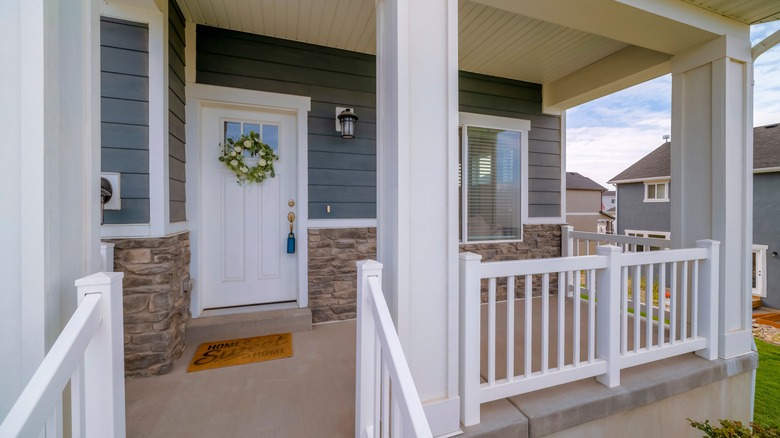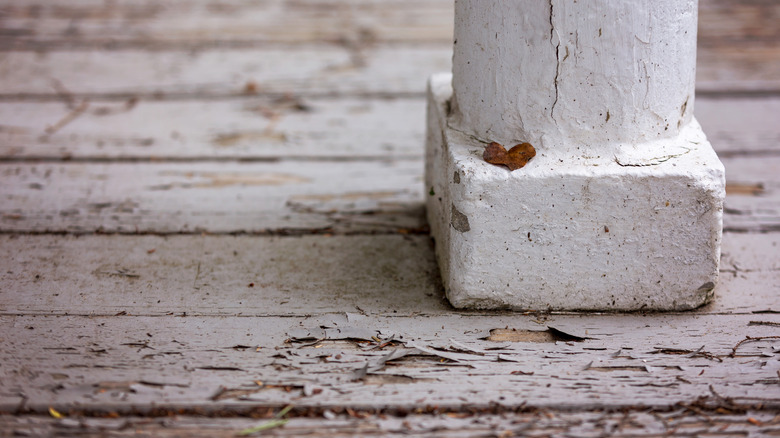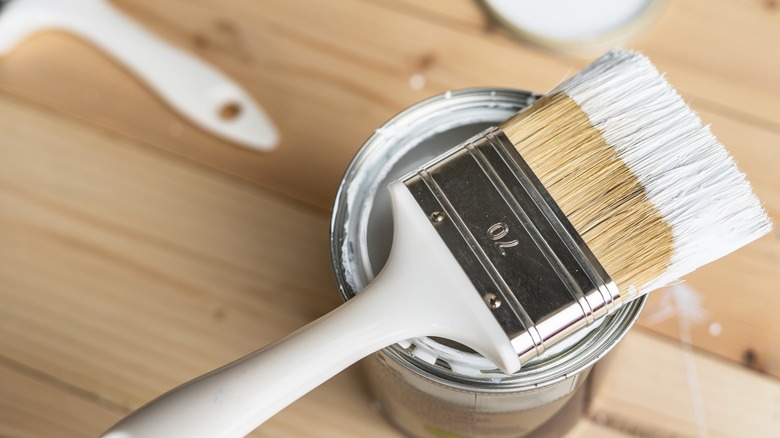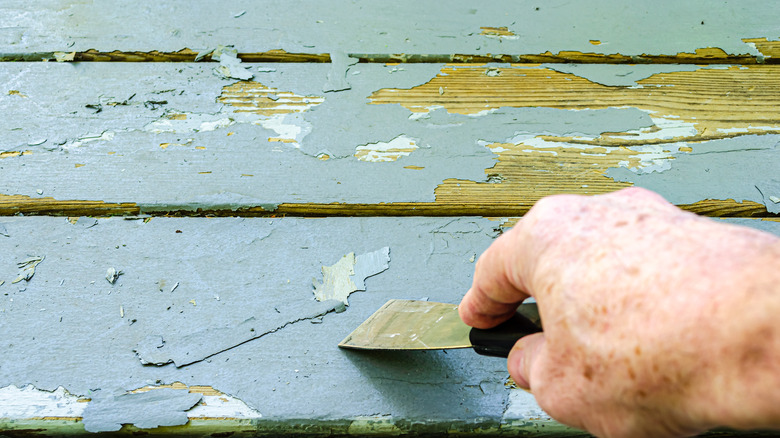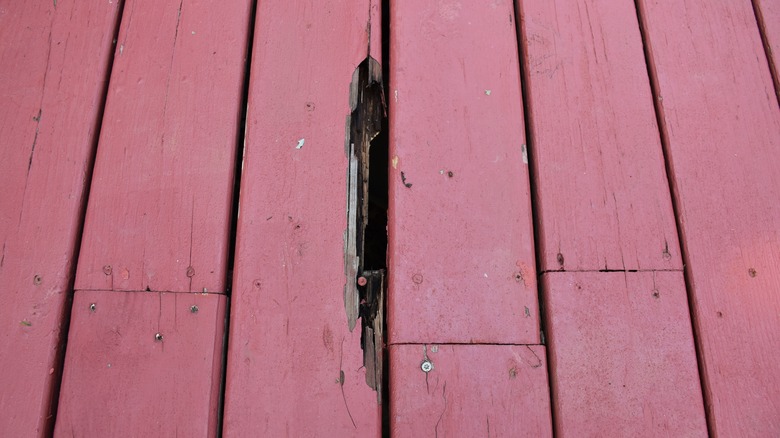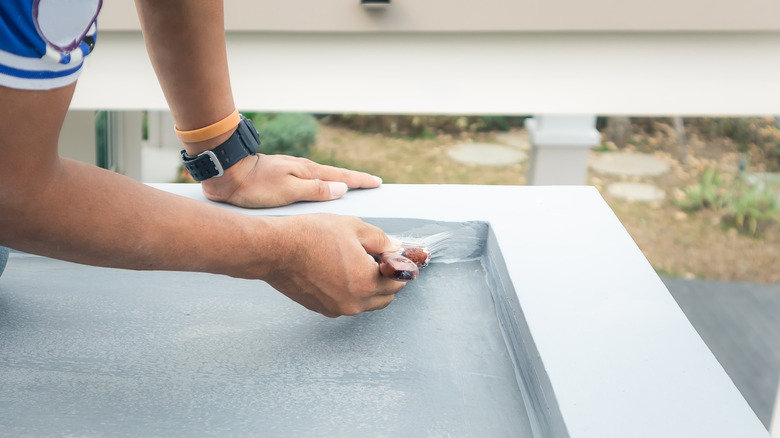The Best Method To Fix Your Chipped And Peeling Porch Paint
Porches, like patios or decks, are an element that can add serious value to a home, along with adding serious enjoyment to time spent outside. But, they do require a bit of maintenance. One of the most common issues porch owners face is chipping and peeling porch paint. Not only does peeling porch paint become unsightly and diminish the appearance of a home, it can also lead to more serious damage and deterioration if it is not addressed.
To be sure, every homeowner who lives in their home for any length of time will have to deal with chipped and peeling porch paint. Why? Well, even though it may seem that fresh porch paint will last forever when you first move in, the life expectancy of porch paint is 10 years at best. When you consider the term on a standard home mortgage is 30 years and even mortgages considered short term are 10 to 15 years in length, it is reasonable to assume most homeowners will have to repaint their porch at least once. Given that repainting can be time consuming, you'll want to make sure you use the best method to fix your chipped and peeling porch paint so it maximizes its effective life span.
Why porch paint peels
Painted porches are typically made from one of two materials –- concrete or wood. While concrete porches may seem impervious to damage, they actually are prone to chipped, peeling, and flaking porch paint. One of the main reasons for paint peeling off concrete porches include excessive moisture, which can happen when a condensation forms on the porch. Another main cause is improper or incomplete cleaning of the porch prior to the initial painting. Each of these issues can be addressed while repainting the porch.
The reasons paint peels and flakes on wooden porches are much the same. Poor preparation and moisture certainly play a part, as does the quality and age of the paint. The humidity level of the area you live in can definitely impact the life of your porch paint, as humidity not only introduces moisture, but can also cause wood to expand and contract. Regardless of why it's peeling, once the paint begins to peel and flake, it needs to be dealt with so the wood itself remains protected.
When should you repaint your porch?
There are a few factors at play when determining whether to repaint your porch. Things such as the age of the paint, how much peeling is occurring, if the peeling is in a small area or covers a significant amount of the porch, and the time of year.
If your porch paint is nearly a decade old, you should probably go ahead and repaint regardless of how much peeling is evident. If the paint is relatively new and the peeling is occurring in a relatively small area of the porch, you may choose to just repair that portion. If so, be sure to determine what is causing the paint to peel in that specific area and take care of that issue before repainting. Regardless of the age of the paint, if the peeling and flaking is widespread, it is probably best to repaint the entire porch.
Once you have determined you need to repaint, you should consider the time of year. The best time to repaint a porch is late spring. This is because the temperatures are ideal for paint applications, not to mention the refreshed porch will be ready to enjoy for the entire summer. However, porch paint can be applied any time of year. But, you need to be sure you are painting during the proper daytime temperature to ensure proper curing of the paint (via Hirshfield's). This may entail adjusting the time of year or time of day you do your painting.
Remove peeling porch paint
The first step to fix cracked or peeling paint on a concrete porch is to remove any dirt and old paint — particularly loose paint. This can be done with a wire brush, but you can also use paint strippers or a power washer. While paint strippers such as acetone can work, they do produce a foul odor, are flammable, and can cause a lot of irritation to skin. If you do choose to use a stripper, apply to the entire porch, allow it to soak for a few hours, then hose it down. Even after using a stripper, you may want to go back over it with a power washer just to make sure even remnants are removed.
To prepare a wood porch for painting, the first step is to remove all of the peeling, flaking, or loose paint. Start off by sanding with a heavy grit sandpaper. Then, go back over the porch with a wire brush and/or scraper. That takes quite a bit of time and elbow grease, so some choose to skip those steps and use a power washer to remove all the old paint instead. If you are using a power washer for this task, there are a couple of things to keep in mind. One, be sure you go in the same direction as the grain of the wood. Secondly, you must make sure the wood is completely dry before moving to the prep phase.
Prep your porch for painting
After all of the old paint is removed, the next step is to prep your porch for painting. This is a crucial step that can make a huge difference in the appearance of the porch once the paint is applied.
To start the prep process on a concrete porch, remove any grease, dirt, or residue. After that, you should apply an etching compound. These steps will address the improper cleaning issue. The etching compound will also help the paint adhere better to the concrete porch.
If you are working on a wood porch, your next step is to replace any broken, rotten, or damaged boards. It is also a good idea to fill any holes with caulk or wood putty. This will give the porch a more uniform look when finished. Then, the entire porch should be sanded until it is smooth. Finally, clean any dirt, dust, or debris.
Seal, prime, and paint your porch
Once your concrete porch is completely prepped, it is time to take steps to solve – or help reduce — the moisture issue. In order to do so, you should apply a penetrating concrete sealant. After the sealant has completely dried, it's time to paint. It's best to apply a coat — or two — of primer on top of the sealant before applying the fresh paint. To make sure you get maximum life from your porch paint, be sure to pick the best concrete porch paint your budget will allow.
Once the porch is properly prepped, the first step is to apply one or two coats of primer. This helps to seal the wood to prevent damage and allows the paint to adhere better. Make sure you allow for plenty of dry time between coats by following the manufacturer's suggested use instructions. Finally, paint the porch with a high quality paint designed for high traffic, outdoor use.
